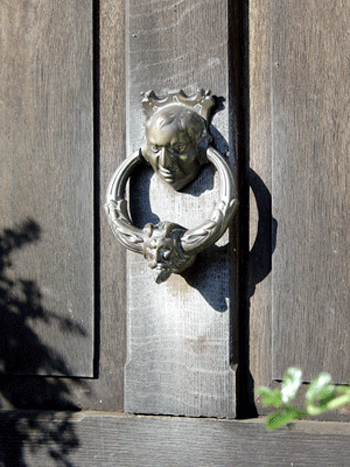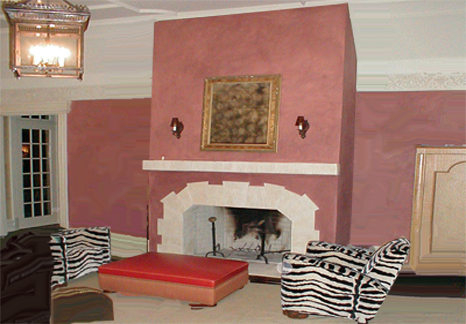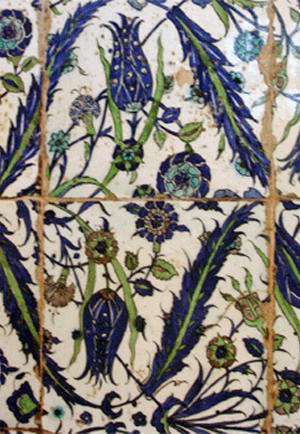Craftsman Style
Drawing on Arts and Crafts principles of simplicity, fine craftsmanship, and a preindustrial aesthetic, the early twentieth century furniture maker and architect Gustav Stickley developed a peculiarly American style that eventually came to be known after the popular design magazine he published from 1901 to 1916, The Craftsman.

Craftsman Style
Once a month starting in 1904, The Craftsman featured a home plan based on the Arts and Crafts philosophy, usually featuring deep, overhanging eaves, large groupings of casement windows, open floor plans, and an abundance of natural materials like wood and stone. Craftsman style became widely popular during the early twentieth century, giving Americans of relatively modest means access to high-quality architecture and design for the first time.
Like the work of Frank Lloyd Wright and the Pasadena architects Greene & Greene (who catered to a more affluent clientele), Craftsman homes were meant to be built with local materials and sited with sensitivity to the surrounding landscape so that they appeared almost to have grown organically out of it. Principles of Craftsman design were widely popularized, even finding their way into lower-income housing in the form of Sears “kit” homes.
Rustic Style Classic Elegance
Stucco Rustico is a Traditional interior and exterior textured plaster that epitomizes the rustic old world charm commonly associated with Tuscan environments. I love this treatment for its ease of application and the natural, organic glazed appearance that results when using mineral based plasters and glazes. Whether a rough application or a smooth finish, this treatment holds true to the test of time and, in fact, feels as if time itself stopped to wash the walls personally.
Antiquing Video Tutorial
Turn ordinary objects into heirlooms! Creating the 'Classic Antique' glaze finish for objects, furniture, walls and more. This detailed step-by-step tutorial shows how to mix the right colors to create the perfect antiquing solution for any object, furniture, picture frame and more.

Inside the Craftsman home, form followed function, structural elements and lighting were exploited for their decorative value, and built-in cabinetry, benches, and bookcases added both beauty and utility to the living areas. Full, wide sleeping porches and rustic fireplaces are central features of these homes. The fireplace is often built of stone and flanked by built-in bookcases to create an “inglenook.”
Stickley’s furniture designs took their inspiration from William Morris, but their honest, somewhat utilitarian aesthetic is distinctly American. Usually made of quarter sawn oak in rectilinear shapes, Craftsman-style furniture ranges from sturdy, slatted “Mission”-style desks to bed frames with long, elegantly tapered bedposts. Armchairs and rockers are upholstered in natural, simple materials like canvas and leather. Like English Arts and Crafts furniture, Craftsman pieces are often constructed with Traditional cabinetry techniques like mortise-and-tenon joinery and hammered-metal hinges and handles.
But Craftsman interiors do not necessarily have to consist of de rigeur early twentieth-century antiques. Any wooden furniture with good craftsmanship and clean, simple lines will work with this style -- particularly if the natural beauty of the wood is the main attraction. Accessories are important, both to evoke the period and to lighten up the dark wood tones that predominate in Craftsman homes. Against the background of simple white walls, hardwood floors, oak-beamed plaster ceilings and built-in cabinetry, use stained glass accents, Tiffany lamps, and the glint of metal in the form of pewter accents or brass candlesticks to add sparkle. With accessories, the honesty and warmth of the Craftsman basics can be customized to your taste, whether that runs to more contemporary elements like sisal floor mats, period pieces like Lalique glass or pre-Raphaelite art, or ethnic accents like Mexican textiles and pottery.
Elements of Craftsman Style
Proportion and scale, along with the interplay between linear movement and the spacious qualities of light play an integral role in creating balance and harmony within the room.
Rustic earth tones
Vibrant, colorful patterns underlie this design style.
Feature tutorial.
The Parchment colorwash. Creating the impression of aged walls, the Parchment finish evokes a feeling of history and old world charm. The color density varies over the finished surface and creates appearances of lightly mottled parchment. A soft and airy finish, the Parchment glaze is an ideal way to create mood and character in any room. I’ve found it to be an ideal solution for finishing irregular or textured wall surfaces.

Craftsman Inspirations

Doors:
As the entrance, and welcoming space of the house, doors and porches played an important role in the Craftsman movement.
Doors were often of plain plank construction, fitted with elaborate hinges and latches, rather than knobs, inspired by medieval forms. Later in the movement, painted motifs became popular--either freehand or stenciled--and were supported visually by the use of stained glass.


Windows:
The importance placed on light and air is reflected in the large window areas. Sash windows were commonly used, often incorporating leaded glass as a key detail. Elongated window proportions exemplified this style and one would commonly see the pairing of an upper sash bearing small rectangular panes with a tall, single-paned lower sash.


Lighting:
Lighting plays an leading role in Craftsman style.
Walls:
Color played an important role in the decorator's approach, and a 3 part division of the wall into dado, field and frieze was almost always employed. Full paneling on walls was used on occasion, and stenciled friezes were also favored. With the design of fine wallpapers, lead by Morris and Company of London and Warren, Fuller and Co. of NY, wallpaper was also an accepted wall covering. Early papers boasted floral and medieval designs while the later period would take on Japanese influences. Tapestry hangings were widely used in late interiors.
Special Feature
Painted Inlay Floor Border
This process imitates the appearance of individual pieces of wood inlayed as a border to a wooden floor. A variety of patterns can be created, often imitating an assortment of wood types such as mahogany, oak, pine, ebony and maple. I’ve found this treatment to be a successful method of creating a period feel within a range of styles. And since there are very few design limitations you can create wonderfully unique floors to fit your style.
Ceilings:
In the early period, remaining true to medieval designs was preeminent. Treatments included chamfered beams, designed plaster ceilings, with occasional painting and gilding. Decoration that incorporated painted stenciling was desirable, but as the cost might be prohibitive, ceiling papers, often embossed, became much more common. In the later periods, intricate, prefabricated plaster work was frequently used.

Floors:
Being true to this movement, it was generally considered that only wood or stone was acceptable for floors. Indigenous woods in America were used, oak or maple, most commonly.
Carpets were regularly used, and though authentic Indian, Turkish and Persian carpets were favored, often machine-manufactured carpets were the norm.

Furniture:
A strong design element of the Craftsman movement was the regular use of built-in furniture. It was practical and minimized the clutter that was common in the Victorian era. A window seat beneath a bay window or a bench and sideboard against a wall in the dining room might be incorporated into the house design, for example.

Details:
The desire for openness and light stimulated the use of stained-glass in the Craftsman environment. Doors, windows, wall partitions to lamp shades were all treated with this colorful material. With the development of the electric bulb, lighting took on a new meaning within this period. Glass in combination with fine ironwork resulted in innovative ways to accent - as well as provide functional light for - the indoor environment.

Stencilling:
Stenciled mosaic patterns and hand painted scrolls embellish this Craftsman powder room.
Early American Style
Colonial Amercians drew inspriation from their European heritage. Curent design styles would filter across the ocean and become reinventedin early America. Proportion and scale took reign over ornementation, A neutral color palette of grey blue, greens and rose pinks is readily apparent.
Stucco Rustico - Aged Plaster
Stucco Rustico is a Traditional interior and exterior textured plaster that epitomizes the rustic old world charm commonly associated with Tuscan environments. I love this treatment for its ease of application and the natural, organic glazed appearance that results when using mineral based plasters and glazes. Whether a rough application or a smooth finish, this treatment holds true to the test of time and, in fact, feels as if time itself stopped to wash the walls personally.
The Rustic Color Palette
The Rustic Style color palette falls within a distinct range of color tones and is essential in creating a successful Rustic interior. By using the appropriate color tones you can create a variety of design styles ranging from Period and Historic, regional or thematic. Color helps define our experiences within an interior and exterior environment. It affects us on a physical, emotional, and spiritual level and can be calming and passive, expressive and vital.
Painted Floral Details
Floral patterns used as accents in fabrics and furniture are common place details in the English Country home. These graceful and organic patterns complement the cozy interior of this style and work particularly well with lace window treatments, an heirloom tea service set and the natural and rustic charm of wooden ceiling beams and slightly irregularly textured walls.











